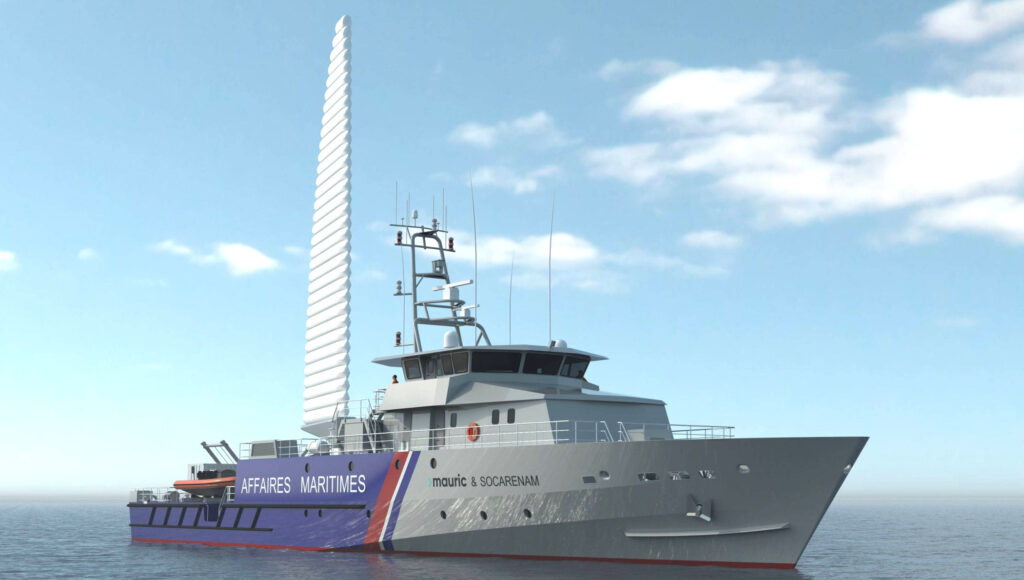Sailing on an OPV? Can, with French flair
Usually, government vessels, especially when used for law enforcement, are seemingly the last ones standing when it comes to fuel efficiency. If not in France, where an offshore patrol vessel combines wind sails with other energy-saving and emission-reducing improvements.
The French Directorate-General for Maritime Affairs, Fisheries and Aquaculture (DGAMPA) made the decision in late 2024, commissioning the SOCARENAM-MAURIC consortium to design and build an offshore patrol vessel (OPV) that will have a hybrid propulsion system with wind sails.
According to the government agency, “This order is part of a dual strategic approach: the modernisation of the fleet dedicated to the control and surveillance system (DCS) and the commitment to the environmental example of DGAMPA vessels.
Vanguard
The new patrol vessel is equipped with an inflatable WISAMO Wingsail from Michelin. This is a large inflatable sail, which can be raised and lowered on a telescopic mast. It is combined with diesel-electric hybrid propulsion and IMO TIER III-compliant engines. Together, these should put the ship “at the forefront of the maritime ecological transition,” according to DGAMPA. WISAMO states in its own videos about these sails that they give at most 10% fuel reduction, which is nevertheless a significant contribution to reduced emissions.
As with all ship designs, there is no silver bullet to increase efficiency. This ship will therefore have a hull design optimised through computational fluid dynamics. In addition, the ship will be equipped with improved insulation with optimised energy management, photovoltaic panels and an active trim control system.
Long missions
The 54-metre OPV is designed for long 12-day missions with a crew of 20. It will be equipped with two launch and recovery systems for 6.5m fast semi-rigid inflatable boats capable of intercepting at up to 35 knots. The vessel’s design with a steel hull and an aluminium superstructure rightly places great importance on seaworthiness and crew comfort by incorporating an anti-roll stabilisation system that combines active fins and a passive free-surface tank, ensuring optimal operability in all sea states. Her propulsion configuration enables a maximum speed of 17 knots and a range of more than 3,600 nautical miles at a cruising speed of 12 knots.
Construction in Boulogne-sur-Mer
The ship will be built at Socarenam’s shipyard in Boulogne-Sur-Mer and delivery is scheduled for the second half of 2027. Socarenam has built more than 350 ships since 1961 and is today a French naval shipyard with more than 250 employees. MAURIC, part of the Exail Group, is a naval architecture and marine engineering firm with around 40 naval architects, draughtsmen and engineers.
Key details:
 Crew: 16 people
Crew: 16 people
Duration: 12 days, up to 200 sea days per year
Length: 53.7 m
Construction: steel hull, aluminium superstructure
Propulsion: diesel-electric hybrid system with wind assistance
Maximum speed: 17 knots
Endurance: 3,600 miles at 12 knots
Nautical equipment: 2 semi-rigid boats of 6.50 m (speed: 35 knots)
Main missions
Protection of national interests
Monitoring and control of marine fisheries
Compliance with environmental regulations
Pollution and navigation monitoring
Assistance to persons
Public service missions and representation of the French administration for maritime affairs
Sources: the websites of MarineLink, Workboat and WISAMO-Michelin.
Image: MAURIC.


